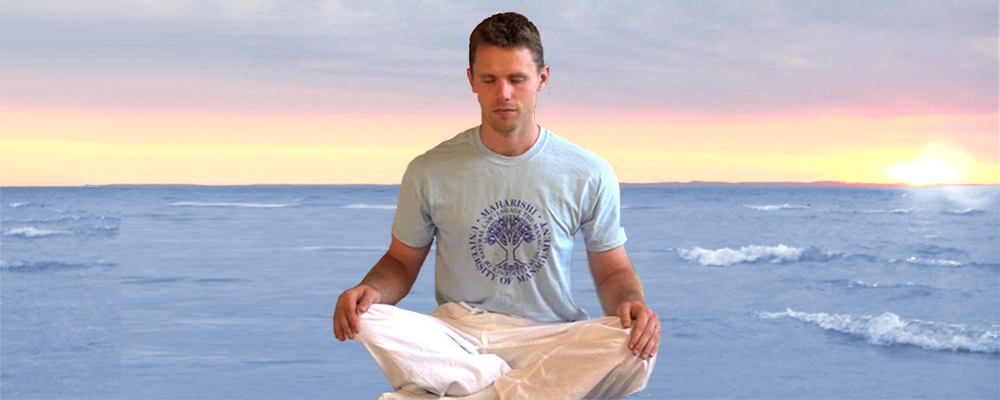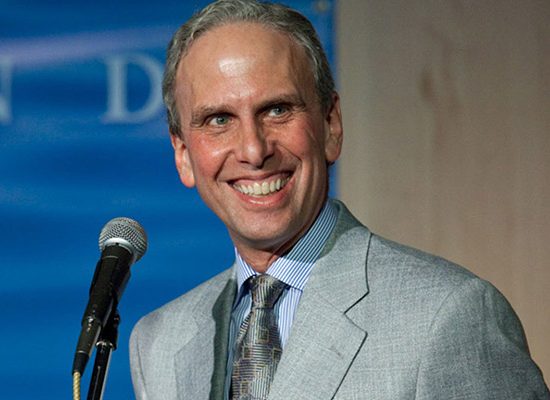Jennifer (Jenny) and Ian O’Laughlin are the owners of two yoga studios in Detroit. They are also both certified teachers of the Transcendental Meditation technique.
Rolf Erickson: There’s been an explosion of interest in yoga in recent years, with over 10 million people practicing yoga in the US today. Why now?
Jenny O’Laughlin: Today our society is so over-stressed, and yoga is a way to help us come back into balance. Yoga asanas or postures bring more equilibrium to all systems of the body. They’re good for the joints, and they support the cardiovascular, immune, and endocrine systems.
Ten years ago in Detroit when I said I was a yoga teacher, people replied, “Yogurt? I thought you eat that.” Today people are more open and aware of the benefits. They’re discovering that these very simple exercises can create a positive transformation in their life.
Ian O’Laughlin: When people discover yoga, they begin to feel empowered to take care of their own health. They feel so much better when they do yoga. It’s a restorative practice they can do on their own.
Rolf: How did you get started with yoga and why are you so passionate about it?
Jenny: I started yoga in the early 90s when I was in high school, and found a yoga class when I was 16 or 17. I didn’t have health problems, but I tended to be shy and nervous. Practicing yoga gave me a stronger sense of self-confidence. About a year after I graduated from college, I took the training to become a yoga teacher, and then began teaching my own classes.
“Practicing yoga gave me a stronger sense of self-confidence.” —Jenny O’Laughlin
Ian: I come from a family of general contractors. I love building things, and worked for 10 years in the family business. But while the construction work itself was enjoyable, the stress connected to the business side led to headaches and back pain. That’s what motivated me to try yoga.
Rolf: What was your motivation for owning a yoga studio?
Ian: It allows us to make a living, and at the same time enjoy what we’re doing. It’s a contribution toward the health and vitality of our community. We love being connected to our students and the community.
Jenny: It’s fulfilling. Yoga stimulates a profound change in people who practice it regularly. It’s so gratifying to watch my students empower themselves through the practice of yoga and then witness the amazing transformations that take place.
Rolf: When did you learn the TM technique?
Ian: I learned TM in college in 1994. It was a high-pressure environment, and TM helped me focus, discover what I really loved to study, and dramatically improved my health.
Jenny: I learned TM in 2007. I had wanted to meditate ever since I started yoga. I felt like something was missing in my practice. I tried so many different types of meditation, but I always felt restless, always looking at my watch, very antsy. It was very frustrating to me that I wasn’t able to meditate.
When I met Ian, he told me that the TM technique was easy, but I didn’t believe him. Then one day I met a TM teacher, and I felt so calm just being in her presence that I sensed TM could also bring that experience for me.
The moment I learned TM, it was like falling in love. I felt like I had been a seeker before, and suddenly I was a knower. I was so grateful for that experience of transcending, after looking so long for a deeper experience of consciousness.
“The moment I learned TM, it was like falling in love. I felt like I had been a seeker before, and suddenly I was a knower.” —Jenny O’Laughlin
Rolf: Yoga has many meanings and connotations today—what does it mean to you?
 Jenny: Many people tend to think of yoga as a practice of postures. But TM gives the direct experience of yoga as a state of consciousness. It’s an experience of the inner unity of life that you can achieve effortlessly through transcending. Most people in the yoga world think of Samadhi or transcendence as something unattainable. Yet TM is a technique that plugs us into that Transcendental Consciousness right from the start.
Jenny: Many people tend to think of yoga as a practice of postures. But TM gives the direct experience of yoga as a state of consciousness. It’s an experience of the inner unity of life that you can achieve effortlessly through transcending. Most people in the yoga world think of Samadhi or transcendence as something unattainable. Yet TM is a technique that plugs us into that Transcendental Consciousness right from the start.
Rolf: How are the practice of yoga and the experience of Samadhi connected?
Ian: The classic text of yoga is called The Yoga Sutras of Patanjali. The Yoga Sutras describe eight limbs of yoga, which include development of personal virtues, the practice of asana or yoga postures, pranayama or breathing exercises, the practice of meditation, the experience of transcending, and the state of Samadhi or Transcendental Consciousness.
As Maharishi Mahesh Yogi points out in his translation of the Bhagavad-Gita, transcendence, or Samadhi, can actually be the easiest limb to achieve. The TM technique allows our mind to experience Samadhi directly, and this helps the other limbs of yoga develop more effortlessly in our life.
Rolf: What is the value of adding the TM technique to a physical yoga practice?
Jenny: Adding TM to yoga was like a godsend for me. When I learned TM, I had a profound sense of coming home to myself, a deep peace and feeling of being connected with everything around me. I do feel that yoga prepared me for that and also stimulated the desire for it.
“We love teaching both yoga and the Transcendental Meditation technique. They are complementary—a beautiful combination that supports a healthier and more joyful life.” —Ian O’Laughlin
Rolf: When did you begin teaching the TM technique in your yoga studios?
Jenny: Ian and I went to the TM Teacher Training Course in 2008. Since then, we’ve been teaching both Transcendental Meditation and yoga at our studios. People have told us that after learning TM, they can go more deeply into their yoga practice, that they can do postures they’ve never done before. Everyone says they get more flexible, and their practice feels deeper and steadier.
Ian: What I see is that yoga practitioners are yearning for something more. When they learn TM, it helps fill that void; it satisfies something deeper inside that they were seeking. Our students do yoga because they want to feel better, and they find that TM adds a new level of fulfillment.
Rolf: And yoga can be supportive of their TM practice too?
Jenny: We’ve found that people who practice yoga often have a clearer experience of transcending right away. The practice of yoga can help loosen up and release stresses in the body. The benefits that our students gain from their asana practice help prepare their mind and body for the experience of transcending.
Ian: We love teaching both yoga and the Transcendental Meditation technique. They are complementary—a beautiful combination that supports a healthier and more joyful life.






yes I agree
I love the yoga and pranayama teachings. Please I want to continue